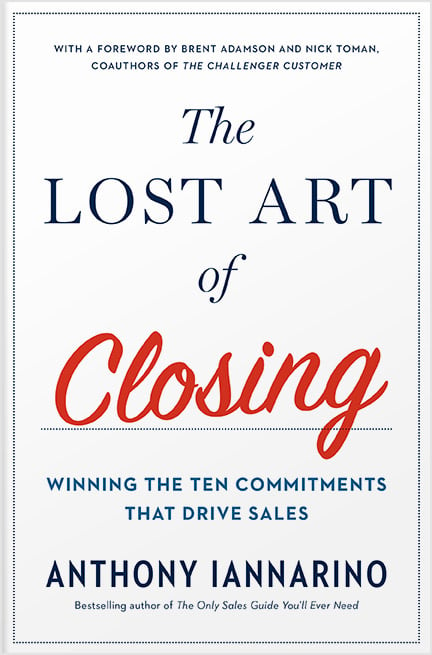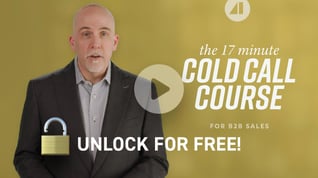Today marks the first anniversary of my publishing Eat Their Lunch: Winning Customers Away from Your Competition.
Eat Their Lunch is my third book. The first primary concept in that book, Level IV Value Creation, is my oldest framework. The order in which I wrote my first three books was intentional; I wrote them in the order I believed a salesperson should read them if they were starting in sales.Win customers away from your competition. Check out Eat Their Lunch
The Only Sales Guide You’ll Ever Need is the first competency model for business-to-business salespeople to be published as a book, even if it has a red cover and intentionally provocative title. The first half of that book is about developing the character traits and mindset necessary to succeed in sales. The second half covers the skills you need to build on top of those traits and beliefs. If you are new to sales, this book is an excellent place to start.Learn Anthony's core strategies & tactics for sales success at any level with The Only Sales Guide You'll Ever Need
The Lost Art of Closing: Winning the 10 Commitments That Drive Sales followed the first book a short ten months later. One of the primary challenges in sales today is gaining the many commitments that start with the first meeting, extend through tricky outcomes like building consensus, and end with your client executing and obtaining better results. The second book stands alone, but it’s made easier if you have done the work in The Only Sales Guide.No more pushy sales tactics. The Lost Art of Closing shows you how to proactively lead your customer and close your sales. 
Lunch Time
Eat Their Lunch is another level. It builds on the other books, and it helps that you have a foundation going into it. But if you have sold for a long time, it will provide you with new concepts, and new practical and tactical strategies.
Of everything I have written, developed, and published, the four levels of value has proven to be among the fastest-acting and most powerful. It helps salespeople understand why their clients perceive them as a commodity, why they struggle to differentiate, and how they can quickly reverse both of these adverse outcomes. The idea of entering the sales conversation from the right strategy has caused more salespeople to email me and send me notes on LinkedIn to share how it has improved their ability to obtain meetings and start a conversation that leads to new opportunities.
The two chapters that follow also seem to be extremely helpful. The second chapter is a practical and tactical approach to developing the case for change by identifying trends using validated proof, recognizing the implications, and sharing your views and values as to what your dream client should do now. If you want to know what it means to be consultative, this chapter provides a strong blueprint for those who are willing to do the work. The context in which you offer the advice helps you make a strong case—and it enables you to pass the relevancy test.
The third chapter is a cadence for prospecting that describes how you apply the work you do in the first two chapters to gaining meetings with your dream clients. The outline of how to manage a sixty-prospect campaign over thirteen weeks by providing value and a professional persistence has helped those who have executed it to gain more meetings with more significant prospects, something that should come as no surprise.
When you listen to people who study the trends in sales speak or read what they write, you’ll notice that the need for consensus on the buyer’s side is always right at the top of the list. There is not much is published about how you go about building consensus. The two middle chapters of the book provide a structure for thinking through the problem of building consensus, starting with five factors that allow you to see what is invisible to others, like how engaged a contact is with an initiative or how compelled they are to change. The choices you make need to follow the assessment you make about the individuals and the picture that emerges.
An Anthropologist
One reader sent me a note after reading the book, the last third of which is how you become consultative, something necessary for this approach. His letter said, “I used to think I knew what it meant to be consultative, but only now do I understand, and it is helping me win more deals.”
There are some books in every field written by people who study the subject from afar, researching and providing data, something necessary and useful. Other writers, me being one of them, write because our experience doing something has provided us with the strategies to succeed in producing specific outcomes.
Eat Their Lunch at the one-year mark is what consultative selling looks like here and now, as we head into the third decade of the 21st Century. If you pick the book up, send me an email, and I’ll send you the workbook.








.jpg?width=768&height=994&name=salescall-planner-ebook-v3-1-cover%20(1).jpg)


